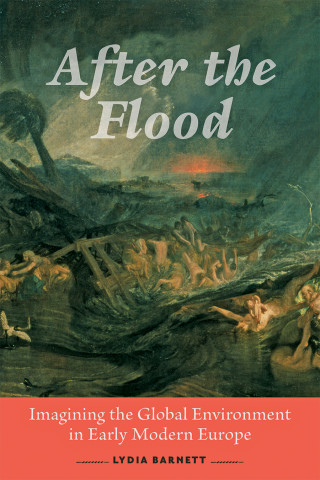


Reviewer Wouter de Vries - Leiden University
CitationLydia Barnett’s After the Flood is an ambitious and innovative attempt to historicize early modern approaches to thinking about (global) climate, while at the same time providing a framework for thinking about these imaginations in relation to 21st-century discussions on climate change. It is both a continuation of Paolo Rossi’s monumental The Dark Abyss of Time (1984) and Martin Rudwick’s oeuvre as a whole, as well as a modernization of their approach.
According to Barnett, the book «argues that the idea of a global environment susceptible to alteration by human behaviour emerged out of transnational and cross-confessional networks of intellectual exchange in early modern Europe … between the late sixteenth and early eighteenth centuries» (p.22-23). Indeed, the connections drawn by Barnett between scholarly ideas, scholars and their (religious) backgrounds is one of the strongest and most innovative aspects of her book.
Chapters one and two explore the many connections between faith and Flood, by thoroughly investigating, and at times rectifying, our understanding of early modern scholarly notions of the relation between time (scales), scripture, faith and nature. The selection of source material is commendable, and includes both the "usual suspects", as well as new(er) authors such as Camilla Erculiani.
Chapters three and five further elaborate on the protestant and catholic specificities of thinking about the earth, the environment and the Deluge. This is one of the strongest points of Barnett’s book, which clearly demonstrates the importance of being sensitive to these religious (and geographical) backgrounds, a dynamic that has remained undervalued by many other authors on the topic.
Chapter four is in many ways the pivot that this book revolves around. It details how the scholarly discussion of ideas about the Flood developed in tandem with the Republic of Letters. Barnett’s claim is that the Flood stood to become a subject that would unify scholars from many different backgrounds and convictions, but did not live up to that expectation.
Barnett’s historical analysis is spot on, and a valuable contribution to the field. However, the conceptual framework chosen to explore these matters could raise some eyebrows. The majority of the book revolves around the concept of "global environment", a term that most would agree is historically contingent, and to the modern reader conjures up all sorts of meteorological and geological associations – as does the word "climate". Nevertheless, little attempts are made to explain if the early modern "environment" can be compared to ours.
Drawing parallels between modern-day discussions of "anthropogenic global climate change" and early modern thinking about a (let’s not forget: fictive) global Deluge or Flood would have required at least an explanation of why and how we can use this term as a universal "category of analysis". Barnett makes some attempt to do so, but a claim that «the image and story of Noah’s Flood, as reinterpreted by Christian European scholars during the Scientific Revolution, may be the unacknowledged ancestor of much environmental thinking in the European and Euro-American scientific tradition» (p.19) should in my opinion be substantiated by an analysis that goes well beyond the discussion of "Christian European scholars during the Scientific Revolution" that Barnett provides.
Barnett sets herself to connecting this "global climate" and the concept of ‘human agency’, and she connects this explicitly with a terminology borrowed from modern (critical) environmental humanities. At times, drawing these parallels feels uneasy: Barnett’s usage of terms as «Anthropocene», «geological agency» (Chakrabarty) and «environmental reflexivity» (Locher and Fressoz) in my opinion provide an interesting historical contrast, but hold less value for the historical analysis of the work of historical earth scholars. Parallels are not connections – which is particularly the case for early modern Europe, when the ‘human agency’ explored by Barnett is often still connected to man’s sin and divine retribution – something that the author admits, but should have explored further on a more conceptual level.
Setting out to combat the «long-standing misperception that premodern people could only see themselves as the passive victims of forces beyond their comprehension or control» (p.9) is a noble pursuit. However, the author does not fully deliver on her promise when she states that her book builds on earlier literature «by connecting it to the burgeoning studies on the early modern European imagination of the globe – which also identifies Europe’s colonial expansion as a key driver of global imaginaries – in order to illuminate a strain of early modern thought that saw humans as makers of climactic, geologic, and environmental change on a planetary scale» (p.9). This book is not an encompassing analysis of such ideas in the early modern period, but rather an excellent discussion of a scholarly discussion that was more limited in scope. Ironically, After the Flood has some trouble letting the Flood go.
Despite these conceptual reservations, Barnett’s analysis of seventeenth- and eighteenth-century earth-scholarship is inventive, at times surprising, and always thorough. The book is a valuable contribution to the growing field of publications that seek to draw the study of the earth, in all its facets, away from a strict geological-historical approach, and to instead open it up to a broader analysis by historians of knowledge, science and culture. Using a modern terminological toolbox may need some conceptual finetuning, but it has the clear advantage of opening up the field to a broader readership, and makes Barnett’s ideas relevant not only for those interested in early modern science, but also to those interested in the historical parallels, if perhaps not roots, of this thinking.